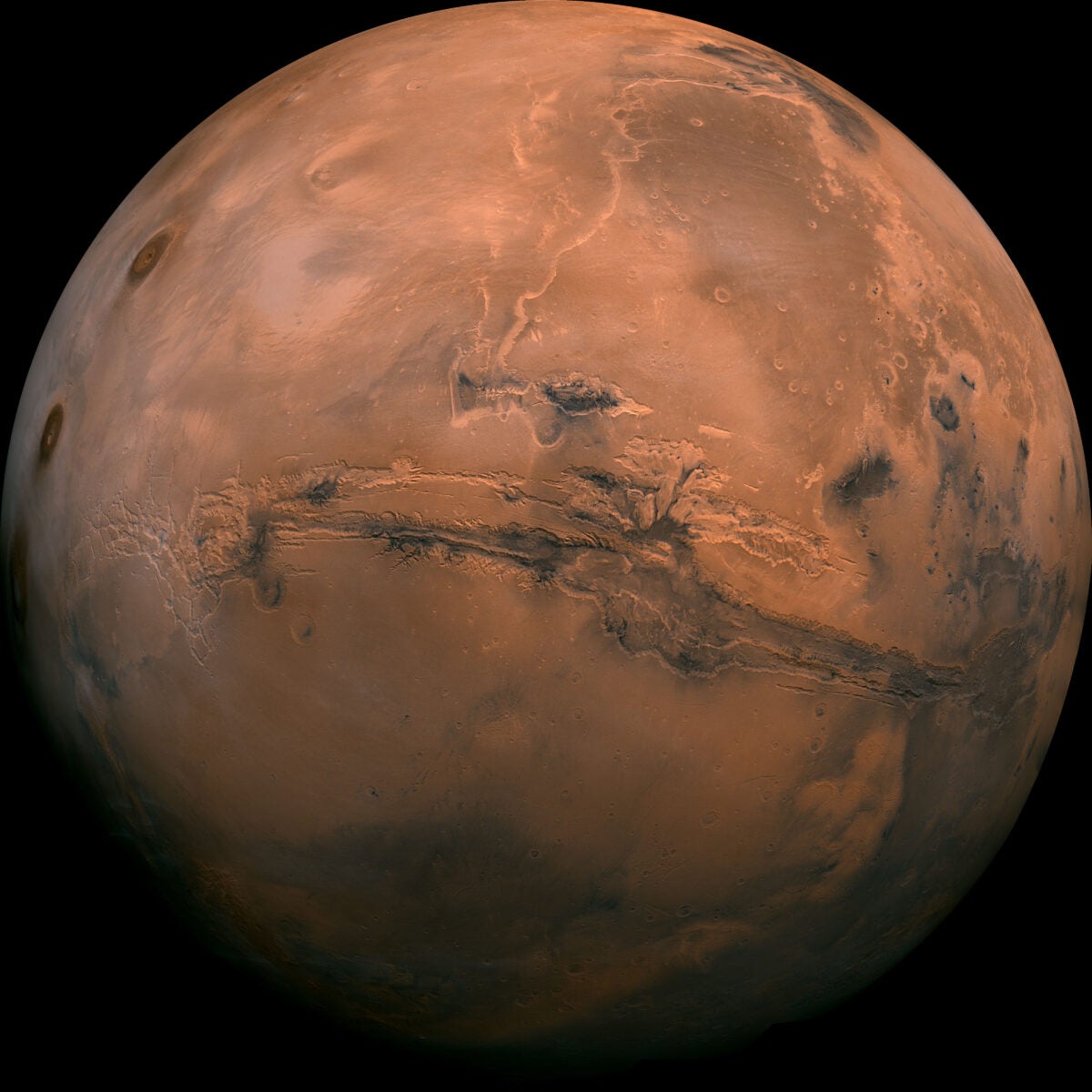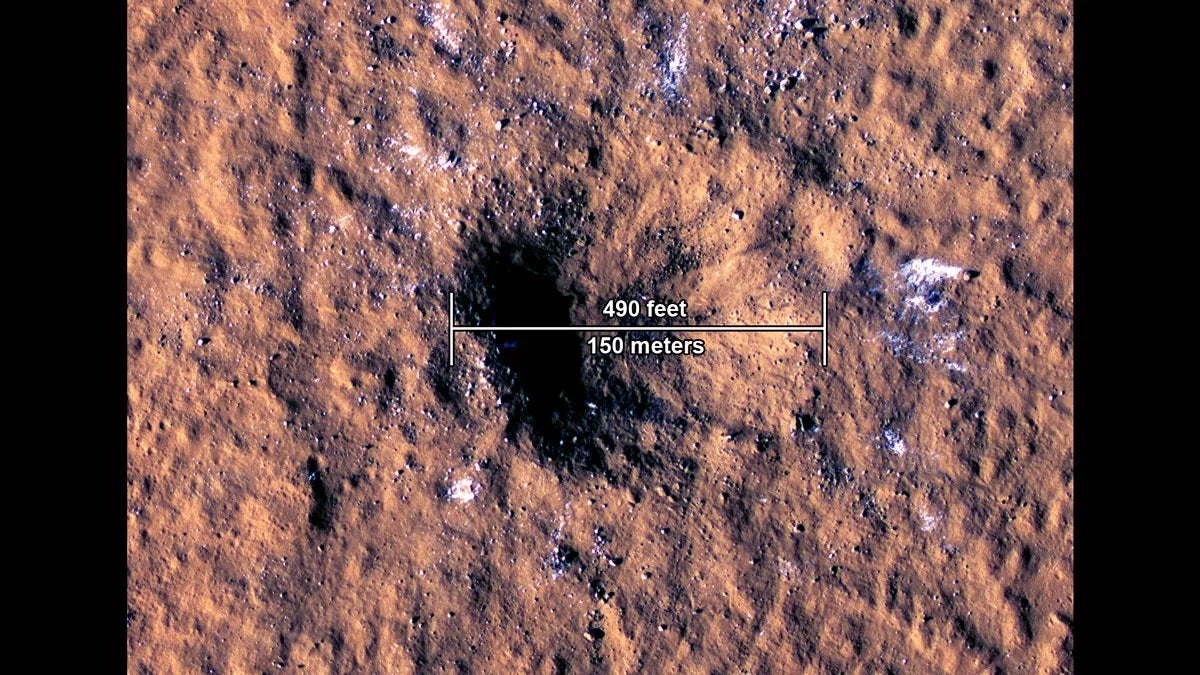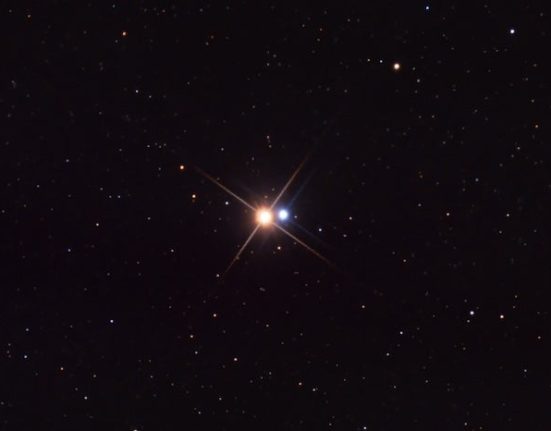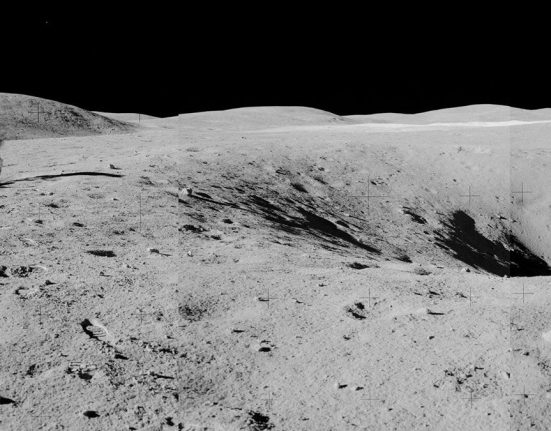
Credit: NASA/JPL-Caltech
Scientists have long wondered why more bowl-shaped craters caused by asteroid impacts have not been found on Mars, even though the Red Planet lies next to the asteroid belt and its thin atmosphere is only 1 percent as thick as Earth’s. A new study suggests that about 300 basketball-sized meteorites scar the surface of Mars each year, raising previous estimates by fivefold.
The findings are based on data from NASA’s InSight lander, which for more than four years listened to Mars’ seismic tremors and probed the planet’s geological history. Researchers studied seismological data recorded by InSight’s onboard seismometer, which scientists say is capable of hearing the faintest rumbles on Mars. They found that “there is no place on Mars that is more likely to be hit than any other,” says study lead author Natalia Wójcicka of Imperial College London, adding that future robotic and crewed missions to Mars could benefit from these findings when selecting landing sites and base camps.
The new impact rate is five times higher than estimates published a decade ago and based on satellite images, rather than ground data. “That suggests we’re missing a lot of craters by looking only at the surface of the planet because we’re not getting images of all of Mars all the time,” Wójcicka says.
Moreover, many of the craters left by these impacts have never been seen by orbiting satellites, according to the researchers. “We were very excited,” says Wójcicka. “We could hardly believe it.”
Rumors on Mars
The seismometer onboard InSight, called the Seismic Experiment for Interior Structures (SEIS), recorded about 1,300 quakes during its four-year mission. The instrument alone wasn’t able to distinguish which tremors were due to meteorites or where on Mars they occurred. But a group of signals share similar properties, one of which is that most of their energy is above 4 hertz, consistent with a shallow source like a meteor impact rather than an earthquake deep within Mars, Wójcicka says.
Between 2018 and 2022, InSight heard 70 so-called “very high frequency” events, all of them likely created by meteorite strikes, according to the new study, which was published last month in Astronomy of nature.
By studying the properties of these signals, Wójcicka and her team predict that between 280 and 360 basketball-sized meteorites will fall on Mars each year, leaving behind craters larger than 8 meters (26 feet) in diameter. Although this crater size is within the range that scientists can detect in satellite images, “we don’t have a systematic way of imaging areas,” Wójcicka says, so it’s difficult to associate the craters with the events InSight heard. But “[the signals]are similar enough to each other that at least more of them, if not all of them, could be impact-related, but we don’t have confirmation of that because we haven’t seen the craters.”
Observing craters
Satellites don't capture all of Mars all the time, and there are often no repeating images of the same region. This limits the number of comparisons scientists can make between a region before and after a meteorite impact, when the crater or any material excavated by the meteorite can be detected in the images. The task is made more difficult by the fact that examining the images almost always requires a human eye, Wójcicka says.
“It takes a lot of human training to find these craters in images,” he says. “The smaller they are, the more likely we are to miss them.”
Last month, a different team of scientists stained Eight football-field-sized impact craters pockmarked the surface of Mars that had not been previously seen by satellites. Six were near InSight’s landing site and two were among the largest ever seen, suggesting “the planet is being hit much more frequently than we can see using images alone,” Ingrid Daubar of Brown University in Rhode Island, who led the companion study, said in a statement. statement.

Daubar said impacts of this magnitude are expected to happen only every few decades, perhaps even just once in a lifetime. But his team found that they had occurred just 97 days apart. “It could be just a crazy coincidence, but there’s a very, very small chance that it’s just a coincidence,” he said. “Most likely the two big impacts are related, or the impact rate is much higher for Mars than we thought.”
Reconstructing the history of Mars
Unlike Earth, Mars lacks active plate tectonics, the ever-shifting chunks of crust that cause earthquakes when they collide. But the planet rumbles from deep within, driven primarily by the planet's shrinking and cooling.
Traditionally, scientists use crater counts as “cosmic clocks” to date a planet’s surface, with older surfaces having more craters than younger ones. Since a higher impact rate means it takes less time to accumulate the same number of craters, better understanding impact rates can help scientists fine-tune their indicators of the age of the Martian surface. This, in turn, can reveal when the last major event that erased previous craters, such as a volcanic eruption, occurred on Mars.
And if the impact rate on Mars is different than previously thought, “this will force us to rethink some of the models that the scientific community uses to estimate the age of planetary surfaces throughout the solar system,” Daubar said. And by understanding what happened on Mars, scientists can better understand the history of our own planet, he added.
“This is important for understanding our solar system, what is in it, and what the population of bodies that impact our solar system looks like, both as hazards to Earth and also historically to other planets,” Daubar said.










Leave feedback about this